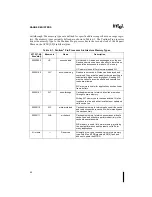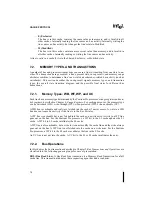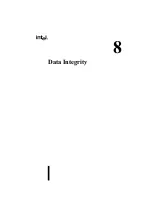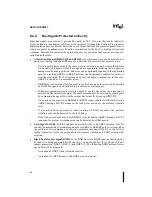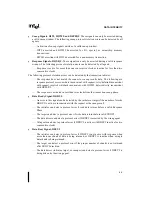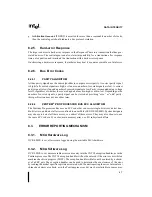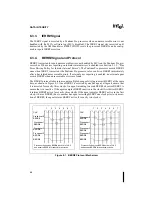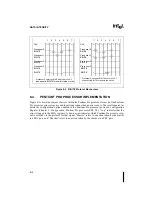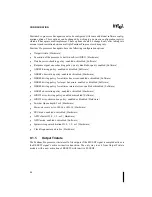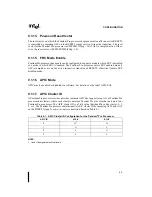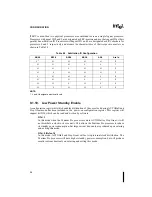
8-6
DATA INTEGRITY
•
Target Ready Signal, TRDY#.
— TRDY# protocol violation can be detected by all agents when TRDY# assertion is
detected with response assertion or when TRDY# is deasserted in less than three
clocks from the previous TRDY# deassertion, or when TRDY# is deasserted even
when it is required to be stretched due to DBSY# active from the previous data
transfer.
— The target can detect a TRDY# protocol error if TRDY# is asserted by the wrong
agent.
— The initiator and the target can detect a TRDY# protocol error if TRDY# is asserted for
a transaction other than a write or a writeback.
— The initiator or snooping agent can detect a TRDY# protocol error if TRDY# is not
asserted two clocks prior to an Implicit Writeback Response.
•
Address Error Signal, AERR#. An AERR# protocol violation can be detected if AERR#
is asserted outside of a valid Error Phase.
•
Bus Error Signal, BERR#. A BERR# protocol violation can be detected by all agents if
BERR# is asserted for greater than four clocks. (3 clocks plus 1 clock for a wired-OR
glitch)
•
Bus Initialize Signal, BINIT#. A BINIT# protocol violation can be detected by all agents
if BINIT# is asserted for greater than four clocks. (3 clocks plus 1 clock for a wired-OR
glitch)
8.2.3.
Unprotected Bus Signals
Errors on some Pentium Pro processor bus signals cannot be detected:
•
The execution control signals CLK, RESET#, and INIT# are not protected.
•
The error signals FRCERR and IERR# are not protected.
•
The PC compatibility signals FERR#, IGNNE#, A20M#, and FLUSH# are not protected.
•
The system support signals SMI# and STPCLK# are not protected.
8.2.4.
Time-out Errors
A central agent on the bus can enhance error detection or correction by observing system-
dependent time-out errors.
•
Response time-out. If the response is not returned after a reasonable delay from the
request, the central agent may provide a hard failure response to terminate the request.
•
Lock time-out. If LOCK# is asserted for more than a reasonable number of clocks, then
the central agent should provide a hard failure response. The lock time-out duration should
be much longer than the response time-out duration.
Summary of Contents for Pentium Pro Family
Page 17: ...1 Component Introduction ...
Page 26: ...2 Pentium Pro Processor Architecture Overview ...
Page 27: ......
Page 36: ...3 Bus Overview ...
Page 62: ...4 Bus Protocol ...
Page 105: ...5 Bus Transactions and Operations ...
Page 126: ...6 Range Registers ...
Page 131: ...7 Cache Protocol ...
Page 135: ...8 Data Integrity ...
Page 148: ...9 Configuration ...
Page 161: ...10 Pentium Pro Processor Test Access Port TAP ...
Page 172: ...11 Electrical Specifications ...
Page 201: ...12 GTL Interface Specification ...
Page 229: ...13 3 3V Tolerant Signal Quality Specifications ...
Page 233: ...14 Thermal Specifications ...
Page 239: ...15 Mechanical Specifications ...
Page 241: ...15 2 MECHANICAL SPECIFICATIONS s Figure 15 1 Package Dimensions Bottom View ...
Page 252: ...16 Tools ...
Page 260: ...16 8 TOOLS Figure 16 4 Generic MP System Layout for Debug Port Connection ...
Page 264: ...17 OverDrive Processor Socket Specification ...
Page 290: ...A Signals Reference ...
Page 320: ...Index ...
Page 328: ......


